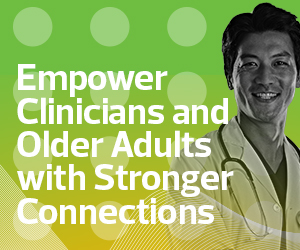Senior care organizations that are already offering onsite primary care services have seen tremendous value added to their communities. Fort Myers, Fla.-based Cypress Living, for example, now enjoys better care coordination and a stronger relationship with residents.
“It provides a different opportunity to interact with residents that you don’t get in a traditional outpatient primary care setting,” Louisa Cannamela, vice president of clinical services at Cypress Living, told HealthTech this year. “You get those little interactions with them throughout the whole time that they’re there. We get to help transition them as they age through our continuum of care.”
Innovative senior care organizations that want to embrace data analytics and provide a valuable service — and potentially attract more residents — should consider whether building up a primary care program on campus fits their strategic goals.
Why Organizations Want to Bring Primary Care on Campus
As more senior care organizations bring primary care onsite, the benefits become more apparent. Having timely medical care available for residents is crucial: If something happens, a provider is right there to attend to those complex medical needs.
It reduces residents’ stress levels knowing that a provider is close by if something does happen. And it supports preventive care, potentially reducing the rate of hospitalizations.
It also transforms senior care organizations to become more agile, data-driven and integrated. As programs mature, these organizations can use the data they have to provide more personalized, continuous care.
READ MORE: Highlighting the need for innovation and collaboration in senior care.
How to Address Key Challenges to Onsite Primary Care
Examine whether an onsite primary care service is right for your senior care organization. Depending on your location, it may be more beneficial or cost-effective to develop a partnership with a local health system to provide primary care services to your campus. See if it’s a service that residents are looking for, and make it an option in case they already have a family doctor. Make sure that your offerings will benefit residents; don’t just make a decision in a bubble without relevant stakeholders involved.
Infrastructure is important: An organization’s connectivity and security are critical areas to strengthen when looking to stand up a primary care program. Consider a hybrid model like Cypress Living’s, which has a physical doctor’s office and telepresence solutions.
Also, interoperability will be a major, ongoing challenge for senior care organizations to refine. If an organization has multiple electronic health records systems and disparate solutions that can’t connect to each other, the primary care service will not be optimized for either patient or provider needs.
If providing onsite primary care is new for your senior care organization, it shouldn’t just be a knee-jerk reaction to offer a new service. It should be a well-developed plan that involves lessons learned from your peers in the industry.
DIVE DEEPER: Thrive Center’s CEO makes staffing shortage concerns a top priority.
Looking to the Future of Onsite Primary Care
As healthcare providers move away from a fee-for-service model toward value-based care, the change will impact the rest of the industry, including senior care organizations. More of these organizations are looking for services that support preventive, holistic care, not just treating one symptom one time.
Fall prevention is a common topic in this space, and it needs to have a more comprehensive approach beyond, “We just had a fall. Now what?” Did the resident have a change in activity level or diet? Were there any recent life changes? Fall prevention must include more aspects of the resident’s life, not just trying to avoid a discrete event. That’s really where data analytics, management and integration will come into play.
Senior care organizations will also look to adopt more remote patient monitoring solutions, noninvasive sensors and voice-controlled technologies. And expect more growth in automation and artificial intelligence-powered solutions.
This article is part of HealthTech’s MonITor blog series.












